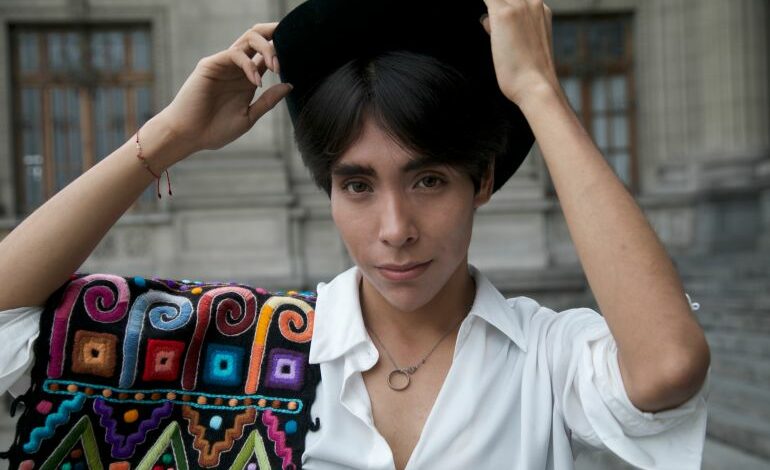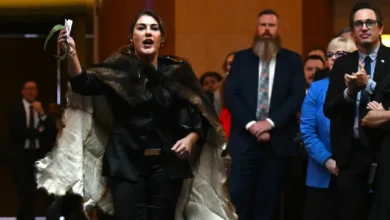Through K-pop and Quechua, singer Lenin Tamayo celebrates his Andean roots

Strolling up the neoclassical steps of Peru’s Supreme Court with a technicolour Indigenous shawl draped over one shoulder, Lenin Tamayo is keenly aware of the power of symbolism.
The 23-year-old Peruvian singer has shot to viral fame in recent months — earning millions of views on TikTok — thanks to his novel genre of music, which fuses influences from across continents and cultures.
He blends Korean beats, Andean folklore and subversive imagery, in some cases taking aim at the administration of President Dina Boluarte through his music.
“I want to inspire others,” said Tamayo, who sings in Quechua, an Indigenous language spoken by the Incas and still used by an estimated 10 million people across South America. “I want love to unite us, to unite our people.”
Tamayo’s music, which adds a Quechua twist to Korea’s K-pop music, has been dubbed “Q-pop”. Each song from his debut album Amaru, released in August, is inspired by Incan mythology. The title itself refers to a mythic double-headed snake.
In his performances, Tamayo dances flamboyantly — using the highly choreographed dance moves of a K-pop star — to a backing of traditional Andean musical instruments such as pan flutes and rain sticks.
Although he was born in the capital Lima, Tamayo was raised in the culture of the Andes Mountains, the ancestral home of the Incas and other Indigenous groups.
As the only child of Yolanda Pinares, an Andean artist who sings in Spanish and Quechua, Tamayo grew up listening to a broad range of Latin American folk music.
He often waited for his mother backstage, as she juggled stage performance with busking and bartending.
Pinares wove Andean tradition into Tamayo’s everyday life. She would even pack his school lunchbox with foods from the Peruvian highlands such as “cancha” — toasted corn kernels — and “tarwi”, an Andean legume.
But those lunchtime snacks raised eyebrows among his schoolmates in the capital. That, combined with his timid demeanour and atypical looks — a skinny frame, bushy eyebrows and pronounced cheekbones — led to bullying.
“I felt this internalised racism,” he said. “I was timid as a boy.”
Music has long been a way for Tamayo to process his struggles. He first took to the stage at age seven with his mother. By age 14, he was writing songs for her. Later, he learned to use social media to promote her work.
But he went in his own direction when he started to pen his own songs at age 22.
“I was born on the stage,” Tamayo said. “But it was different when I began to write my own songs.”
Departing from his mother’s folk-centred sound, Tamayo’s music embraced contemporary influences like the genre-bending stylings of Spanish singer Rosalía and K-pop icons Girls’ Generation and BTS.
But Tamayo mixes those inspirations with the sounds and rhythms he grew up with. “I wanted to reclaim my identity with my words and my compositions, to explain where I came from.”










